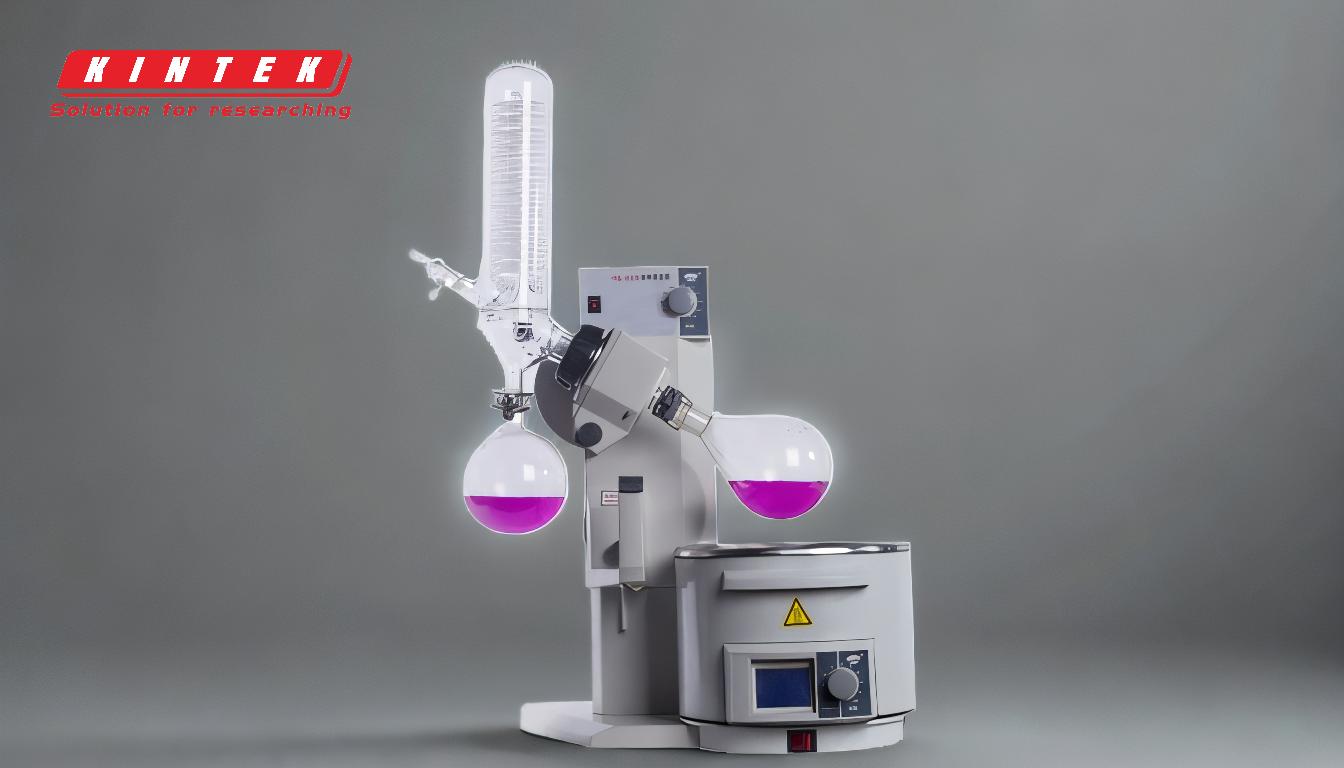A rotary evaporator is a versatile laboratory device primarily designed to remove solvents from samples through evaporation under reduced pressure. It is particularly effective for separating low-boiling solvents (e.g., ethyl acetate, n-hexane) from compounds that are solid at room temperature. Additionally, it can handle high-boiling solvents (e.g., water, dimethylformamide) if the vacuum system is capable of achieving very low pressures. The rotary evaporator is widely used in organic, inorganic, and polymeric material processing due to its efficiency, speed, and ability to minimize thermal decomposition of sensitive compounds. It is also employed in applications like aroma compound extraction, where gentle evaporation is crucial.
Key Points Explained:

-
Primary Function of a Rotary Evaporator:
- A rotary evaporator is designed to remove solvents from samples via evaporation under reduced pressure. This process is faster and more efficient than traditional methods, as it avoids the need to heat the sample to the solvent's boiling point at atmospheric pressure.
-
Types of Solvents Removed:
- Low-Boiling Solvents: These include solvents like ethyl acetate, n-hexane, and butane, which have relatively low boiling points and are often solid at room temperature. Rotary evaporators excel at separating these solvents from mixtures.
- High-Boiling Solvents: Solvents such as water, dimethylformamide (DMF), and dimethyl sulfoxide (DMSO) can also be removed, provided the rotary evaporator's vacuum system can achieve sufficiently low pressures. However, evaporating high-boiling solvents is less common due to the risk of "bumping" (sudden, violent boiling).
-
Applications in Different Fields:
- Organic Chemistry: Rotary evaporators are widely used in organic laboratories to separate solvents from reaction mixtures, especially when isolating solid compounds.
- Inorganic and Polymeric Materials: They are also used to process inorganic and polymeric materials, where solvent removal is necessary for purification or analysis.
- Aroma Compound Extraction: The gentle evaporation process makes rotary evaporators ideal for extracting delicate aroma compounds without exposing them to high heat, which could degrade their quality.
-
Advantages Over Traditional Methods:
- Reduced Thermal Decomposition: By operating under reduced pressure, rotary evaporators allow solvents to evaporate at lower temperatures, minimizing the risk of thermal decomposition of sensitive compounds.
- Efficiency and Speed: The rotary motion increases the surface area of the liquid, accelerating evaporation and making the process quicker than traditional distillation or heating methods.
-
Instrument Capabilities and Limitations:
- Volume Capacity: Rotary evaporators can handle sample volumes as large as 3 liters, making them suitable for both small-scale and medium-scale laboratory work.
- Vacuum System Requirements: The ability to remove high-boiling solvents depends on the vacuum system's capacity to achieve very low pressures. This is critical for solvents like water, which require significant pressure reduction to evaporate efficiently.
-
Practical Considerations:
- Bumping Risk: High-boiling solvents, particularly water, are prone to "bumping," which can disrupt the evaporation process and potentially damage the equipment. This is why such solvents are often evaporated as a last resort.
- Instrument Maintenance: Proper maintenance of the vacuum system and seals is essential to ensure consistent performance, especially when working with high-boiling solvents.
In summary, a rotary evaporator is a highly effective tool for solvent removal, particularly for low-boiling solvents, but it can also handle high-boiling solvents under the right conditions. Its applications span organic, inorganic, and polymeric material processing, as well as delicate extractions like aroma compounds. The device's ability to operate under reduced pressure makes it faster and safer than traditional methods, though care must be taken when working with high-boiling solvents to avoid issues like bumping.
Summary Table:
| Aspect | Details |
|---|---|
| Primary Function | Removes solvents via evaporation under reduced pressure. |
| Solvents Removed | Low-boiling (e.g., ethyl acetate, n-hexane) and high-boiling (e.g., water). |
| Applications | Organic, inorganic, polymeric material processing, aroma extraction. |
| Advantages | Reduced thermal decomposition, faster evaporation, and gentle processing. |
| Limitations | Risk of bumping with high-boiling solvents; requires strong vacuum system. |
| Volume Capacity | Up to 3 liters, suitable for small- to medium-scale lab work. |
Discover how a rotary evaporator can enhance your lab processes—contact us today for expert advice!










